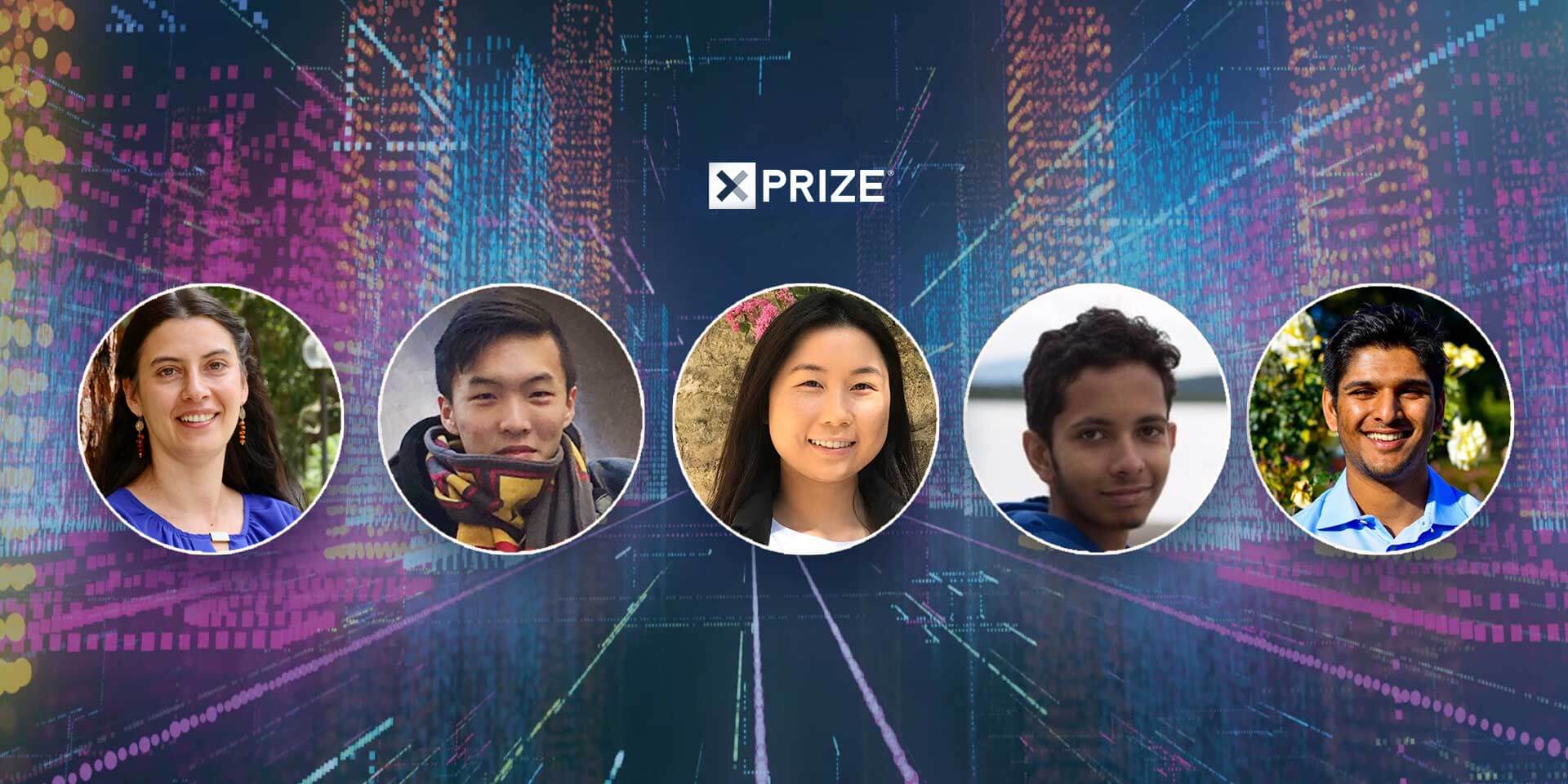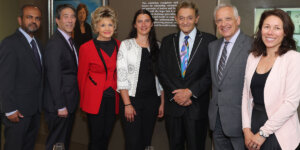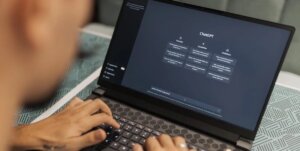
Associate Professor Bistra Dilkina and fourth year undergraduate students Jackie Dong, Katherine Sing, Kaushik Tandon and Prathik Rao.
A team of USC computer science students has advanced to the final round of the $500K Pandemic Response Challenge, a global competition run by XPRIZE and sponsored by Cognizant. The aim: to develop an AI-driven model that could help policymakers handle the COVID pandemic.
In December, the USC team was among 48 teams from 17 countries chosen to advance to the second and final phase of the competition. On February 26, 2021, the winning teams will be chosen at the conclusion of the challenge.
Jackie Dong, Prathik Rao, Katherine Sing and Kaushik Tandon—all fourth-year students—worked under the supervision of Bistra Dilkina, an associate professor of computer science. As one of the only undergraduate teams in a pool of professionals and academics from across the globe, standards were high and competition was tough. But they rose to the challenge.
“I am so proud of this amazing team of USC undergraduates, passionate about applying AI for social good,” said Dilkina. “They worked as a team and built off their knowledge and skills, but also learned so much on the fly. And they were very creative about combining different approaches.”
AI for social good
It all began last fall, when the team came together for a class project in CS 499: AI for Social Good, taught by Dilkina, the co-director of USC’s Center for Artificial Intelligence in Society.
“The class focuses not only on the technical details of AI or machine learning, but on various applications of AI in solving real world social problems, such as ecology or protecting the environment,” said Dong.
During the course, Dong, Sing and Tandon worked on developing a machine learning model to forecast COVID infection rates in Los Angeles neighborhoods. The goal was to predict monthly COVID infection rates at the local, instead of state, level.
“I think the most insightful part of that project is that we’re not predicting cases solely based on mathematical versus statistical modeling,” said Dong. “We’re basing it on census and mobility data to keep track of quarantine status—how many people are coming into or leaving the city. So, we use a lot of social data to see the effects on COVID cases.”
Through techniques learned in class, they were able to improve the prediction result, reaching an R-squared value of 0.85 (R-squared 1 indicates the regression prediction perfectly fit the empirical data). After completing the class project, they presented their results to the LA City Data Science team, providing a list of neighborhood-level social factors that could impact COVID numbers.
Since the team was already working on COVID rates prediction, Dilkina jumped to share news of the XPRIZE Pandemic Response Challenge. At this point, Prathik Rao, the teaching assistant for the AI for Social Good course, came onboard. Three weeks before the due date of December 22, they got to work.
Time crunch
In phase 1 of the competition, teams were tasked with analyzing daily COVID data, intervention strategies and mitigation policies from more than 200 regions worldwide to develop and test a prediction model that could anticipate infection spikes.
“We leveraged time-series and regression models to accurately forecast infection rates, which got us to the second phase,” said Rao.
They had until Feb. 3 to complete phase 2, which involved developing “prescriptor models” to both minimize the number of cases and the stringency, or cost.
“The second phase is all about prescribing these stringencies—how strict do I have to be on shutting businesses or getting donations for vaccine money? We’re trying to minimize the number of cases, but also how strict we’re being on the economy,” said Rao.
“We had to learn some complicated stuff for phase 2 that was outside the scope of the class, like understanding deep neural networks. We were thrown into this unknown codebase, which is good experience—it’s similar to what would happen in industry.”
Throughout the process, the team would work intensely on the code and then present it to Dilkina, who served as an advisor.
“Professor Dilkina said we have to do something that not only has good results, but also makes sense,” said Rao. “She expresses that a lot in her classes as well: machine learning is only as good as the people who explain how it works.”
Up for the challenge
It wasn’t easy. The AI models used by the team can take 15 hours to train, so they only had a limited number of attempts with the clock ticking down.
“The last week of phase 2 was super hectic for all of us,” said Tandon. “We were writing a ton of code, training quite a few models, and evaluating them. It was intense.”
In addition, due to the pandemic, they could only communicate through video conferencing—and the students were in different time zones, to boot. “We had plenty of meetings at 10 p.m.,” said Rao. Despite some sleepless nights leading up to the deadline, they not only made it through the competition, but also remain upbeat about the experience.
“Honestly, it’s been a lot of fun. I feel like we learned a lot,” said Tandon. “It’s really cool to see what we’re doing have some interesting results that could impact the real world. I never thought of it as hard work. There are some very star-studded teams, but I think we gave it all we could. It was a great learning experience.”
Published on February 23rd, 2021
Last updated on February 23rd, 2021











